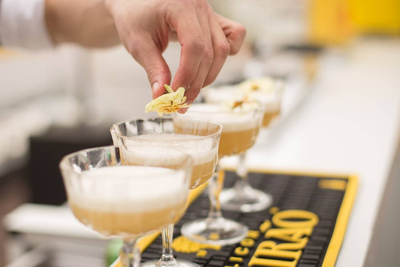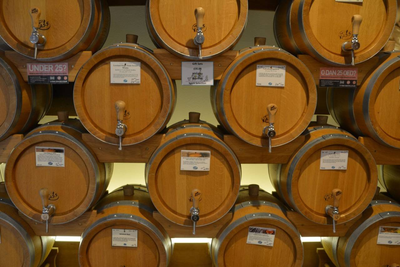How to Weigh Liquor Bottles
Wondering how to weigh liquor bottles? There's a whole lot to learn in the liquor business, but knowing how to weigh liquor accurately comes right on top. There are different types of scales used to weigh liquor bottles; the most accurate of these is the digital scale.
How To Weigh Liquor Bottles- A Simple Step-by-Step Guide
Why is it Important to Know How to Weigh Liquor Bottles?
Keeping tabs on a bar's liquor stock is crucial for a bar manager or owner. After all, it can drum up business and drive up profits. Keeping close watch on a bar's liquor inventory can tell a bar owner which spirits are fast-movers and which are no-shows. This can help cut losses and focus energies on the crowd pleasers.
In order to take stock, bartenders are first required to weigh stock. However, weighing bottles isn't easy. One must correctly note the density, volume and quantity of every single bottle of liquor to make an accurate inventory. Checking bottle weight regularly helps bars and restaurants keep an eye on liquor inventory and prevent losses. Losses in a bar arise from theft, overpouring and spillage. Tracking liquor consistently and comparing liquor spent with starting quantities also helps bar managers keep a check on bartenders who have a tendency to waste.
Bartenders often gauge bottle weight or liquor quantity by eyeballing, or sizing up a bottle. This, however, is one of the most inaccurate methods of inventory count. And if bottle weight is recorded incorrectly, it can lead to costly rush orders or deadstock. Therefore, knowing how to weigh liquor bottles and take inventory counts the right way can save the bar time and money.
liquor inventory scale
How to Weigh Liquor Bottles the Old-school Way
The popular method of weighing liquor bottles is to manually take up every bottle, eyeball it and guess its bottle weight. But this is one of the most inaccurate methods of taking inventory. Not to mention frustrating and time-consuming!
Liquor bottles have to be weighed twiceat the start of the inventory period, and again at the end of it. (While some bars manage a daily bottle count, others opt for different frequencies.) The process is to check each bottle in the bar and in storage, make an educated guess of its quantity to measure inventory, and make a note of the measure. Gauging the quantity of liquor in a bottle by simply looking at it is called 'tenthing'.
In tenthing, the contents of a bottle are rounded off to the nearest tenth, relative to the full bottle. For example, a bottle is measured as half-full, one-third, or a quarter full, and so on. This method does not account for variance in bottle weight measures estimated by different bartenders. It doesn't also factor in differently shaped bottles that make measurement through tenthing nothing but glorified guesswork.
The tenthing process has to be repeated for each bottle in the liquor inventory and its measure noted down on an inventory spreadsheet. This process, done daily, is an exhausting way to measure inventory. It's little wonder that even the most scrupulous bartender tends to make mistakes when measuring liquor the manual way.
Restaurant Management

Weighing liquor bottles is a pain.
It requires bartenders to count the bottles individually and weigh them. There is, of course, a simpler way.
How Often Should a Bartender Weigh Liquor Bottles?

How often liquor bottles are weighed depends on the size of the liquor inventory, the staff available, and the attitude of the bar manager towards inventory counts. Most bartenders take inventory on a weekly or biweekly basis. Some do it daily; some, monthly. Whichever way you choose to do it, nail down an inventory period and commit to take inventory regularly on the appointed days to optimize stocks and sales. As a bartender or bar manager, you must weigh bottles as regularly as possible so that you're up to speed on your inventory data.
A bar manager must take beginning inventory at the start of day of the inventory period, and ending inventory at the close of it. Not all bars have the operational wherewithal to measure inventory often, so it's important to choose your own frequency. Just make sure to create an inventory system where inventory count is taken at regular intervals to keep track of losses in bottle weight and unchecked usage by staff.
Social Media
How to Weigh Liquor Bottles with Modern Tools
One of the most important tasks for a bartender is to accurately measure liquor bottles and record the right quantity during inventory counts. Luckily, there are technologically advanced tools available today that keep track of liquor inventory easily, efficiently, accurately, and with speed. These tools are cloud-based, and WiFi- and Bluetooth-enabled to track inventory usage across multiple devices.
A barcode scanner, coupled with a Bluetooth scale and bar inventory app, works with modern bar inventory software. Together, they more than halve the time spent taking inventory. The scanner first scans the barcode on a bottle as it is placed on the Bluetooth bottle scale. It reads the liquor name from the barcode and captures the weight from the scale. It then transmits this information to the bar inventory app on a mobile device or laptop. The information is immediately stored in an inventory database.
- Bartenders report that more and more Americans have been tilting towards spicy or flavored drinks like hard seltzer or drinks made with fresh fruit.
- A 2019 survey showed that sales of hard seltzer are estimated to triple to 281 million by 2023.
Step by Step Guide on How to Weigh Liquor Bottle- Step 1

Weighing liquor bottles and taking inventory are the primary functions of any bar looking to optimize sales and notch profits. As a bar manager, these are the steps to be followed when scheduling inventory management.
Make a plan
It's important to start off with a plan. Know how your liquor stock is arranged in the bar, identify your liquor sale points, and predict usage. Then choose a place from which to start the inventory. Also, decide on inventory periods, with starting inventory and ending inventory timeframes.

There's no escaping the daily weighing of liquor bottles for stock-taking.
Are you wondering if there's an easier solution to getting the job done? There is, and we have it.
How to Weigh Liquor Bottles- Step 2
Begin The Count
The counting of liquor bottles involves recording the starting inventory, received inventory, and ending inventory of the bar. Those willing to spend time and effort can start manually measuring liquor bottles through the tenthing method. Those keen to optimize their time can pull out their barcode scanners, electronic weighing scales and apps, and set to work.
At the end of the count, manual workers will settle down to calculate the sum of their inventory. They'll compare their calculations with the invoices of received inventory to arrive at the current count. Those using inventory management software, on the other hand, will have their inventory apps process the weight data and feed it directly into the inventory database.
How to Weigh Liquor Bottles- Step 3
At the end of the bottle measuring process comes the final stage of inventory management- data crunching for par level inventory and pour cost management.
Par level inventory
Once stock-taking is complete, it's time to process the numbers for par level. This is the minimum inventory your bar requires to meet expected customer demand before fresh supplies have to be ordered. It is also vital at this stage to factor in unexpected customer demand and provision for safety stock.
Bar inventory apps automatically calculate par level for each liquor variety according to the bar's individual needs. They do this by processing historical inventory data and predicting demand. These apps can also place orders in advance before stocks run out.
Pour cost
Pour cost is the drink's selling price as a percentage of the cost incurred to make it. Bar inventory apps automatically calculate pour cost and analyze which drinks are making profits and which are not. This helps the bar manager calibrate the bar's pricing menu.

Does weighing your liquor every day bore you to death?
Inventory management doesn't have to be so tedious. The right tools can make it a breeze.

